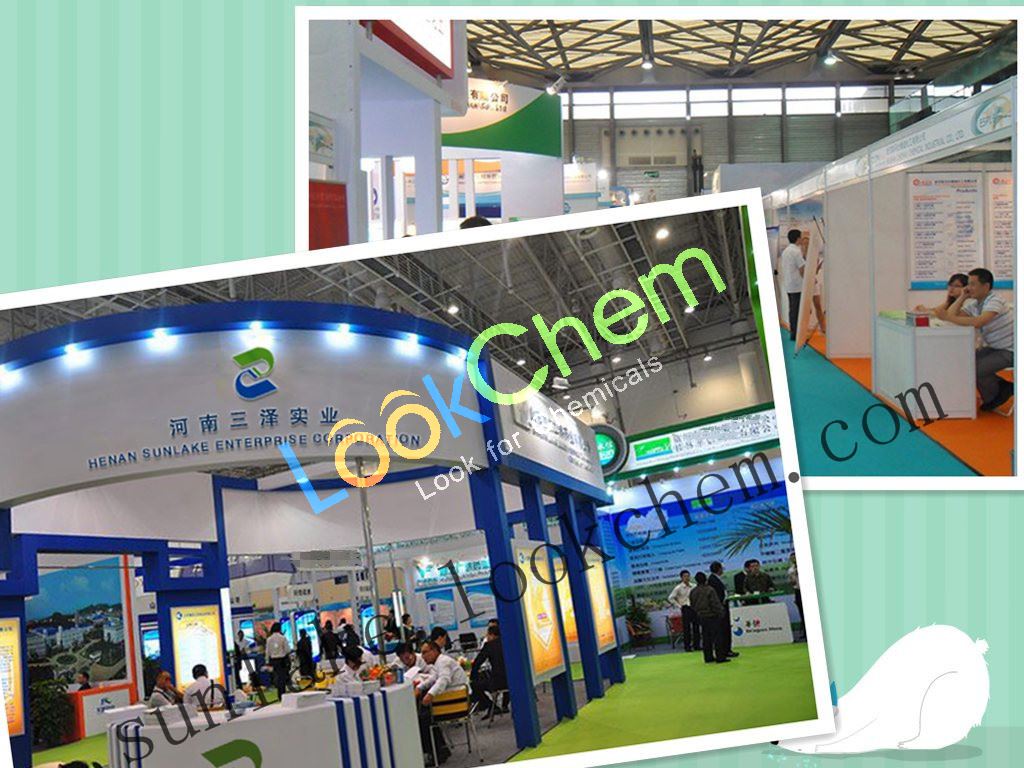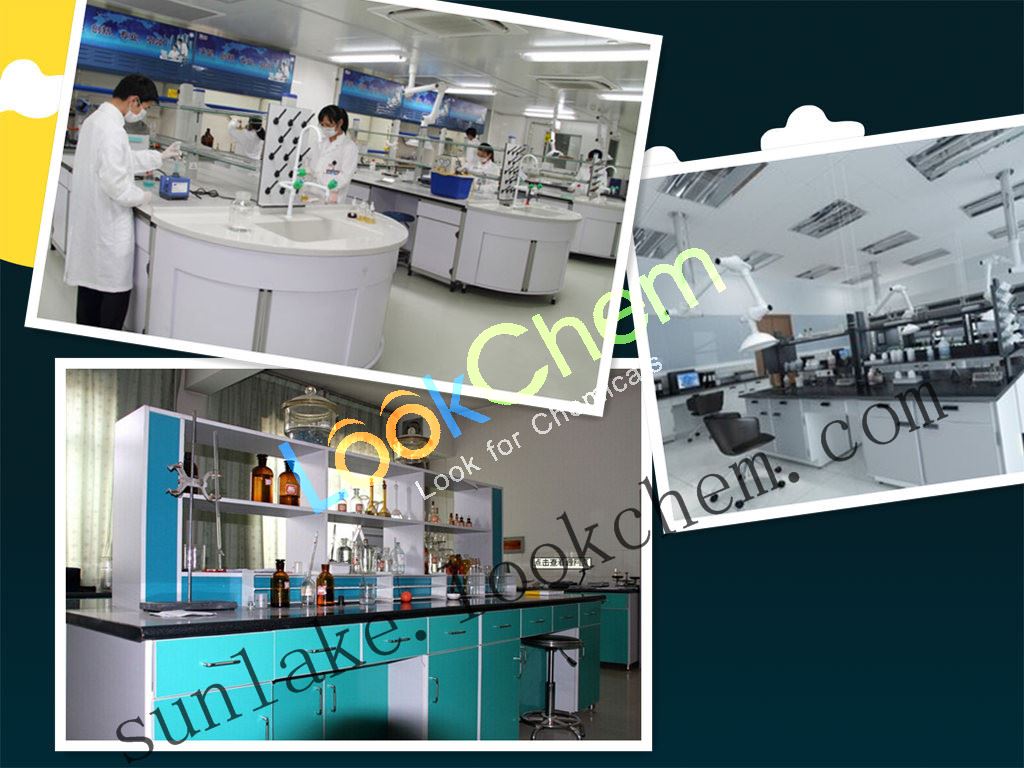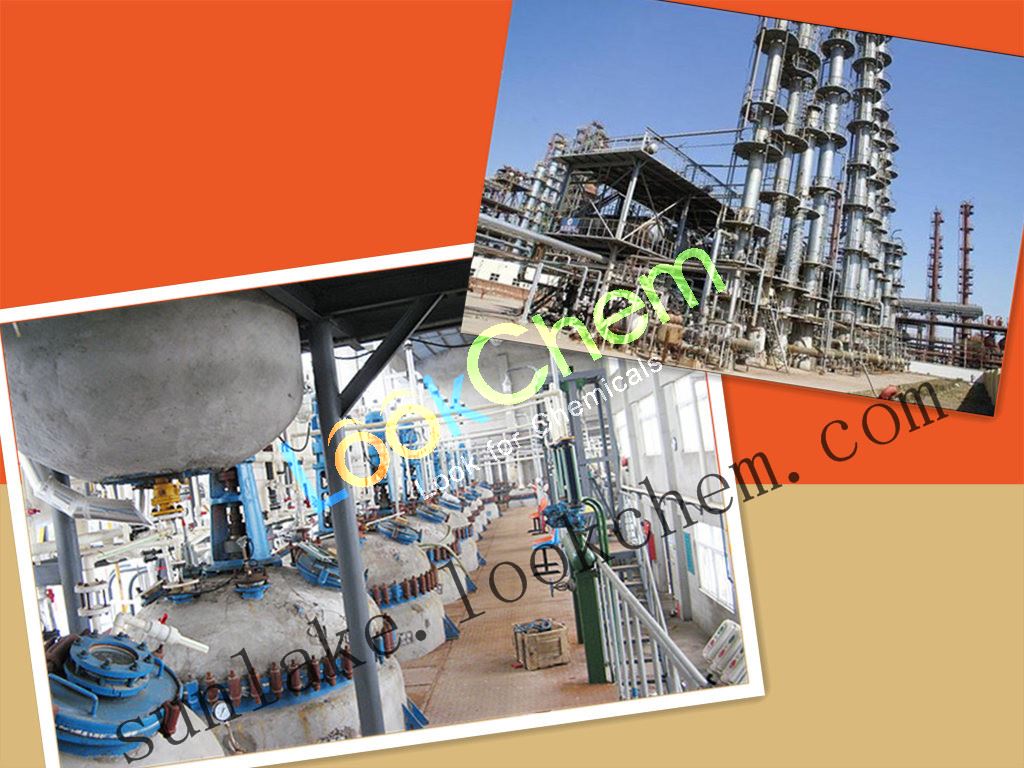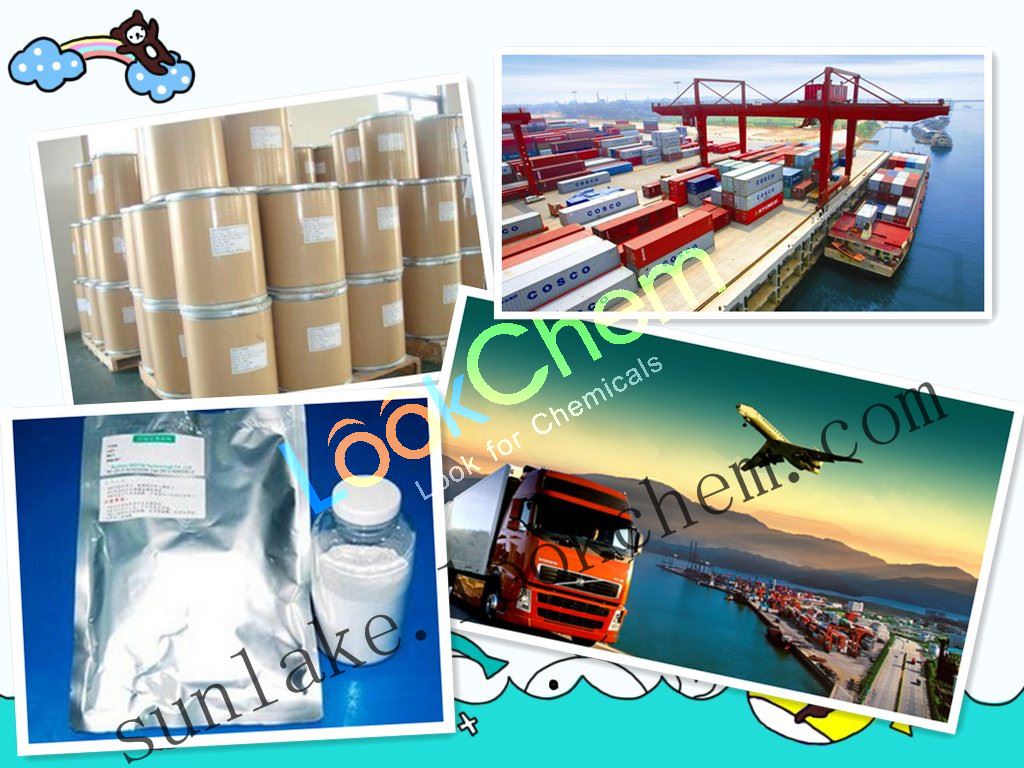HENAN SUNLAKE ENTERPRISE CORPORATION
- Country:
 China (Mainland)
China (Mainland) - Year Established: 2010
- Business type: Trading Company
- Contact Details | Similar Products


You May Like:
-
Diethyl malonate CAS: 1 CAS No.: 105-53-3
USD $1.00-1.00 / Kilogram
-
Factory supply Glibenclamide CAS No.: 10238-21-8
USD $10.00-10.00 / Gram
-
high purity Mavacamten CAS 1 CAS No.: 1642288-47-8
USD $20.00-40.00 / Kilogram
-
( R)-3-(Methylamino)-1-pheny CAS No.: 115290-81-8
USD $3.00-10.00 / Kilogram
-
4-Fluorobenzeneboronic acid CAS No.: 1765-93-1
USD $9.00-99.00 / Kilogram
-
gamma-Cyclodextrin CAS 17465 CAS No.: 17465-86-0
USD $9.00-99.00 / Kilogram
-
Ammonium paratungstate CAS CAS No.: 11120-25-5
USD $9.00-99.00 / Kilogram
-
SODIUM PERCHLORATE MONOHYDRA CAS No.: 7791-07-3
USD $9.00-99.00 / Kilogram
-
4-CHLORO-3-HYDROXYPYRIDINE C CAS No.: 96630-88-5
USD $9.00-99.00 / Kilogram
Sodium carbonate CAS NO.497-19-8
- Min.Order Quantity:
- 1 Kilogram
- Purity:
- 98%
- Port:
- China Main Port
- Payment Terms:
- L/C,D/A,D/P,T/T,MoneyGram,Other
Keywords
- Sodium carbonate
- 497-19-8
- CNa2O3
Quick Details
- ProName: Sodium carbonate
- CasNo: 497-19-8
- Molecular Formula: CNa2O3
- Appearance: white odourless powder
- Application: 497-19-8
- DeliveryTime: Within 3-7days
- PackAge: As requested
- Port: China Main Port
- ProductionCapacity: 300 Kilogram/Day
- Purity: 98%
- Storage: warehouse: low temperature, ventilatio...
- Transportation: By air or by sea
- LimitNum: 1 Kilogram
Superiority
| sodium carbonate basic information |
| product name: | sodium carbonate |
| synonyms: | sodiun thiosulfate;sodium thiosulphate;sodium thiosulfate, 2.00 n;sulfite standard;bisodium carbonate;bisodiumcarbonate;calcined;calcinedsoda |
| cas: | 497-19-8 |
| mf: | cna2o3 |
| mw: | 105.99 |
| einecs: | 231-867-5 |
| product categories: | inorganics;chromatography/ce reagents;eluent concentrates for icalphabetic;ion chromatography;s;sn - sz;by reference material;concentrates (e.g. fixanal);reference material hydrochloric acidtitration;salt concentrates;alphabetical listings;q-s;stable isotopes;inorganic basesvolumetric solutions;chemical synthesis;s - ztitration;salt solutions;solution containers (volpac);synthetic reagents;metal carbonate;chemical synthesis;inorganic bases;materials science;metal and ceramic science;salts;sodium salts;synthetic reagents |
| mol file: | 497-19-8.mol |
|
|
|
| sodium carbonate chemical properties |
| mp | 851 °c(lit.) |
| bp | 1600°c |
| density | 2.53 |
| refractive index | 1.535 |
| storage temp. | 2-8°c |
| solubility | h2o: 1 m at 20 °c, clear, colorless |
| water solubility | 22 g/100 ml (20 ºc) |
| sensitive | hygroscopic |
| merck | 14,8596 |
| brn | 4154566 |
| stability: | stable. incompatible with powdered alkaline earth metals, aluminium, organic nitro compounds, fluorine, alkali metals, nonmetallic oxides, concentrated sulfuric acid, oxides of phosphorus. |
| cas database reference | 497-19-8(cas database reference) |
| nist chemistry reference | sodium carbonate(497-19-8) |
| epa substance registry system | carbonic acid disodium salt(497-19-8) |
| safety information |
| hazard codes | xn,xi |
| risk statements | 32-36-51/53-36/37/38-41-37/38 |
| safety statements | 36/37-26-22-36-39 |
| ridadr | un 3082 9/pg 3 |
| wgk germany | 2 |
| rtecs | xn6476000 |
| f | 3 |
| hs code | 28362000 |
| hazardous substances data | 497-19-8(hazardous substances data) |
| sodium carbonate usage and synthesis |
| outline |
sodium carbonate (na2co3), also called as soda. it exhibits as a white powder at ordinary circumstances and is a strong electrolyte. it has a density of 2.532g/cm3 and melting point of 851 °c. it is easily soluble in water with general property of salt. it is a weak acid salt and slightly soluble in ethanol but insoluble in alcohol. upon being soluble in water, it will be subject to hydrolysis reaction, and making the solution be alkaline with certain corrosiveness and can have neutralization reaction with the acid to form the corresponding salts and release carbon dioxide. it can subject to decomposition at high temperatures to produce sodium oxide and carbon dioxide. long-term exposure to air can absorb moisture and carbon dioxide from the air to produce sodium bicarbonate, and form lumps. it has a very strong hygroscopic property and is easy to form lumps without decomposing at high temperatures. sodium carbonate can react with water to produce three kinds of hydrates including na2co3 • 10h2o, na2co3 • 7h2o, and na2co3 • h2o wherein na2co3 • 10h2o is most stable and release the least heat upon being dissolved in water. it is more used in the photographic industry with the trade name being “carbon oxygen”. na2co3 • 10h2o, also known as crystal base, is easily weathered in dry air. in past time, crystal base was commonly used in domestic washing and washing wool, so it was also called "washing base." in the past time, chinese folks were accustomed to using “block base” which has dual applications including laundry and leaven dough. the “block base” is actually made from the soda added with a lot of water and further stirring (plus some baking soda (nahco3) with its moisture content above 50%. carbonate sodium, when dissolved in water, exhibits endothermic reaction and is easily weathered in the air. na2co3 • 7h2o is unstable and can be precipitated out from saturated sodium carbonate solution only in the range of 32.5 ~ 36 ℃. sodium carbonate is a strong alkali- weak acid salt (pure soda is salt instead of a kind of alkali but with its solution being strongly alkaline). chemically manufactured na2co3 is more pure than natural alkali and therefore people call it "pure alkali." the above information is edited by the chemicalbook of dai xiongfeng. |
| solubility in water |
the maximum dissolved grams per 100 g of water at different temperatures (℃): 7.0g / 0 ℃; 12.2g / 10 ℃; 21.8g / 20 ℃; 29.4g / 25 ℃; 39.7g / 30 ℃; 48.8g / 40 ℃; 47.3g / 50 ℃; 46.4g / 60 ℃; 46.2g / 70 ℃; 45.8g / 80 ℃; 45.7g / 90 ℃; 45.5g / 100 ℃. |
| identification and sodium bicarbonate |
these two substances were placed in two test tubes for heating with the other end of the tube sending through the clarified lime water; if you observed the turbidity of the clarified limewater, then the material in this tube is sodium bicarbonate; if not, then the material contained in the tube is sodium carbonate. basic principle: 2nahco3 = na2co3 + h2o + co2 ↑ (heating), na2co3 will not be decomposed upon heating. |
| toxicity |
adi (acceptable daily intake) make no restrictions (fao / who in 1985). ld50 (median lethal dose) is about 6 g / kg (mice-oral). soda ash dust has irritation effects on the skin, respiratory and eyes. long-term exposure to soda solution may cause eczema and dermatitis. its concentrated solutions can cause burns, necrosis, and even corneal opacity. the maximal allowable concentration of soda ash dust in the air is 2 mg/m3. the operators should wear overalls, door cover, gloves, boots and other protective clothing to protect the respiratory system and skin. |
| standards for use of food additives |
|
| production method |
at present, the method in the industry to produce heavy soda using light soda as raw materials includes solid phase hydration method, liquid hydration method and extrusion method; method using natural soda as rat material including evaporation and carbonation method with the latter two methods have been described in the section of industry sodium carbonate; thus here we only describe the three ways using soda ash as raw material. solid-phase method: put the high-temperature light soda and hot water of 50 ~ 70 ℃ for hydration reaction at 90 ~ 97 ℃ conditions for generating into sodium carbonate monohydrate, which was further calcined at 130 ~ 150 ℃, and further went through sieve to obtain heavy soda products. its reaction equation is: na2co3 + h2o → na2co3 • h2o na2co3 • h2o [△] → na2co3 + h2o liquid-phase hydration method: at about 100 °c, the high temperature light soda is dissolved using water and recycling mother liquor was dissolved to prepare a saturated solution and have hydration reaction; the reation mixture was further pumped to the crystallizer and cool to 80 ~ 90 ℃ to generate the suspension of sodium carbonate monohydrate, which further underwent thickening, separation to generate the heavy soda products. the reaction formula is similar to the solid phase hydration method. extrusion method: extrude the high-temperature (150 ~ 160 ℃) soda from a base compartment in a pressure of 5000 ~ 7000 kg/cm2 to rigid sheet with a thickness of 2 mm, and then crushed and sieved to get the heavy soda product with suitable particle size. the big particles were sent back to be broken while the small particle was subject to extrusion again and cyclically used separately. there are mainly three ways including ammonia soda method, union soda method and natural soda processing method. the main reaction of solvay method is as follows: nacl + nh3 + co2 + h2o → nahco3 + nh4cl 2nahco3 → na2co3 + co2 + h2o the process is briefly summarized as follows: the original salt was dissolved in water and made into refined salt water (or secondary salt water; it is the same below) after the removal of calcium and magnesium salt. the secondary salt water further underwent absorption of ammonia to make ammonia salt water with nacl concentration of more than 89 titers, the ratio of fnh3 and na + concentration ratio being within the range of 1.13 ~ 1.18. the ammonia salt was cooled to 35 ~ 38 ℃ and further sent to carbonization section to have reaction with the pre-compressed carbon dioxide coming from lime kiln and calciner to generate the sodium bicarbonate suspension and flow to filtration section in which the sodium carbonate (bicarbonate) crystal was separated from the suspension and sent to the upper section of calcination for calcination and decomposition at 160 ℃to obtain soda products. the filtered mother liquor is mixed with the lime milk from lime section to get blend; at the same time, use the steam heating to distill out the ammonia in the distillation column for ammonia absorption by salt water for cycle utilization. the production process of the union soda method is divided into soda process (also known as i process) and manufacturing ammonium process (process known as ii) for union production of soda and ammonium chloride while the mother liquor constitutes a closed loop in the two processes. the main reaction is the same as ammonia soda method the process is briefly summarized as follows: the original salt (sodium chloride) was washed with saturated brine to remove calcium and magnesium impurities, and then crushed, washed, thick, separated to obtain the washed salt with qualified purity (nacl content ≥98%), particle size (10 to 20 mesh) and further sent to the salting crystallizer. the overflowed mother liquor ii from the salting crystallizer absorbed the ammonia in the ammonia absorber to generate ammonia mother liquor ii, which after clarification, was sent to the carbonation tower for absorption of carbon dioxide (carbonation) to get the suspension of sodium bicarbonate; the sodium bicarbonate suspension was filtered to obtain solid sodium bicarbonate which was further calcined to obtain the soda product. the mother liquor (liquor i) with heavy soda filtered generated ammonia mother liquor i after absorbing ammonia; the ammonia mother liquor i was further subject to heat exchange with the mother liquor ii through the heat exchanger and sent into cold separation crystallization machine after cooling and further had heat exchange with cold carrier body (brine) or refrigerant (liquid ammonia) through external cooling device; at 5 ~ 10 °c, part of the ammonium chloride is cooled and precipitated out. the overflow liquid (half liquor ii) of the cold separation crystallization device flowed back into the salting crystallizer; add washed salt to precipitate some more ammonia chloride. the ammonia chloride suspension originated from the cold precipitation and salting crystallization device was subject to thickening, separation to obtain a wet ammonium chloride which was further sent to ammonium dry oven to get the dried ammonia chloride product. the overflow liquid (mother liquor ii) of the salting crystallizer was subject to heat exchange with ammonia liquor l to generate ammonia mother liquor ii after absorption of ammonia and then sent to the carbonation tower for making soda. with such kind of continuous cycle, we can constantly produce soda and ammonium chloride. natural soda processing method sesquisoda method: this method is based using sesquisoda as raw materials for production of soda. some us natural soda processing plants apply this method. ore was crushed to around 20 mesh (o.8mm) and sent into the dissolving tank; using circulating mother liquor to dissolve it into a saturated solution and send into the clarifier to clarify it with underflow into thickener; add water to rinse the soda component in the with recycling mud. the clarifier overflow liquid was filtered and sent to three-effect evaporator for evaporation; the crystal slurry taken from the third-effect evaporator was pumped into the thickener and then subject to centrifuge for dewatering to obtain the filtered pellet of sesquisoda, which generates soda through calcination soda. carbon monohydrate method: this method was also based on using sesquisoda as the raw material for the production of soda; its product quality is superior to the sesquisoda process and it is adopted by the majority of the us natural soda processing plants. the ore was crushed to about 6 mm and sent the calciner for calcination at about 150 ℃; the most fraction of the ore is crude soda; it further entered into the dissolving tank and was dissolved at temperature slightly below 100 ℃ and sent to the three-effect evaporator after the clarification with the concentrated soda suspension being isolated to obtain the sodium carbonate monohydrate and sent to drier for drying to obtain heavy soda. carbonation method: this method is based on using natural alkali halide as raw material, and was adopted at dabusu area for natural soda processing. the natural alkali of solution mining or water dissolved alkali halide was subject to clarification, preheating and subject to carbonation with carbon dioxide; further went through filtration and calcination to obtain soda. during the mid-1980s, the ammoniated carbonization method was successfully developed; namely, the refined alkali halide first absorbs nitrogen and then carbonation with the following steps the same as before. compared to the direct carbonization, ammoniated carbonation method increase the sodium utilization by 25% to 65% to 70%. natural soda halide evaporation method: use natural soda ore of solution mining or natural soda originated from the alkali lake to obtain alkali halide which further undergone refining, separation, preheating, evaporation, separation, calcination to obtain orioles soda. sodium carbonate synthesis method: the crude sodium carbonate and sodium bicarbonate was dissolved by steam and clarifying the supernatant after settling impurity; after sending carbon dioxide for reaction to certain concentration, further go through distillation, cooling and crystallization to obtain sesquisoda, the reaction equation is as below: na2co3 + nahco3 + 2h2o → na2co3 • nahco3 • 2h2o natural soda method: take natural soda as raw material; it is subject to steam dissolving and clarification, impurity removal with the supernatant containing sodium carbonate, sodium bicarbonate and sodium sulfate, etc., carry out kiln gas carbonation to make some part of na2co3 to be re-carbonized into nahco3, which was evaporated at 60 ℃ for precipitating out of the corresponding complex with separation generating sesquisoda finished product. the mother liquor was evaporated again to precipitate glauber base. the reaction equation is as below: 3na2co3 + 5h2o + co2 → 2 (na2co3 • nahc03 • 2h2o) at present, china always adopts ammonia soda or union soda method for direct production of edible soda. during the process of making light soda, we need to increase the refining process such as removal of arsenic and heavy metal impurities. see other industrial processes in the part of industrial sodium carbonate. |
| uses |
it is a kind of important raw material for chemical industry with wide application. it is the important raw material for making glass, soaps, detergents, textiles, leather, spices, dyes, medicines, etc. it can be used for analysis reagents and also used for the pharmaceutical industry and photoengraving. it is widely used in glass, chemicals, paper making, metallurgy, pharmaceutical, and textile as well as food industries. it is tv dedicated reagent. it can be used for the food industry as the neutralizing agent, leavening agents such as for the manufacture of amino acids, soy sauce and pasta such as bread, bread and so on. it can also be prepared to dubbed alkaline and add into pasta to increase the flexibility and ductility. as the detergent, it can be used for wool rinse. it can also be applied to bath salts and pharmaceutical use and also be used as the alkali agent of tanning. it is most used in industry with a small part using by the civilian. in the soda ash of industry purpose, it is mainly applied to light industry, building materials and chemical industry, accounting for about 2/3: followed by metallurgy, textiles, petroleum, defense, and pharmaceutical. the glass industry is the largest soda consumer sector with each ton of glass consuming 0.2 ton of soda ash. in the chemical industry, it can be used for manufacturing of sodium silicate, sodium dichromate, sodium nitrate, sodium fluoride, baking soda, borax, and trisodium phosphate. in the metallurgical industry, it is mainly used for fluxing agent, mineral flotation agent, and desulfurization agent for steel and antimony. it can also be used as water softener in printing and dyeing industry. in tanning industry, it can be used for the degreasing of raw hides, neutralizing chrome tanned leather and improving the alkalinity of the chrome liquid. it is also used in the production of synthetic detergent additive sodium tripolyphosphate and other sodium salt. it can be used as a buffer, neutralizing agent and dough conditioner. it can be used in cakes and pastas. make appropriate use it according to actual requirement of production. it is mainly applied to float glass, funnels, optical glass. it can also be used in other sectors of chemical industry and metallurgy industry. it can reduce the flying the alkali dust through application of heavy soda ash, and thus reducing the material consumption, improving the working conditions as well as improving product quality while reducing its erosion on the refractory material to extend the life of the furnace. it is a kind of basic chemical raw material which is widely used in medicine, paper making, metallurgy, glass, textiles, dyes and other industries and can be used as a leavening agent in food industry. it can be used as analytical reagents, dehydrating agent, and battery additives. |
| category | toxic substances |
| toxicity grading | poisoning |
| acute toxicity | oral- rat ld50 4090 mg / kg; oral - mouse ld50: 6600 mg / kg |
| irritation data | skin- rabbit 500 mg / 24 hr, mild; eyes - rabbit 100 mg / 24 hours, moderate |
| hazardous characteristics of explosives | corrosive |
| chemical properties | white odourless powder |
| flammability and hazard characteristics | non-combustible with fire yielding toxic sodium oxide fumes; |
| storage properties | warehouse: low temperature, ventilation, drying |
| extinguishing media | water, carbon dioxide, dry, sandy soil |
| sodium carbonate preparation products and raw materials |
Details
- exhibition in shanghai
we have clients throughout the world:
professional service and rich experience make customers feel at ease, adequate stock and fast delivery meet your desire.

our laboratoy
we have our own independent lab test center:
this makes sure that our technology support is reliable and authoritative.all of self-owned fine chemicals are manufactured strictly in accordance with international standard.,and also has scientific cooperation with local colleges and institutes.

our factory
high quality with competitive price:
we are manufacturer and can provide high quality products with factory price

package & shipment
fast and safe delivery:
parcels can be sent out within 24 hours after payment. tracking number is available
secure and discreet shipment. you have various choices of transportation methods

